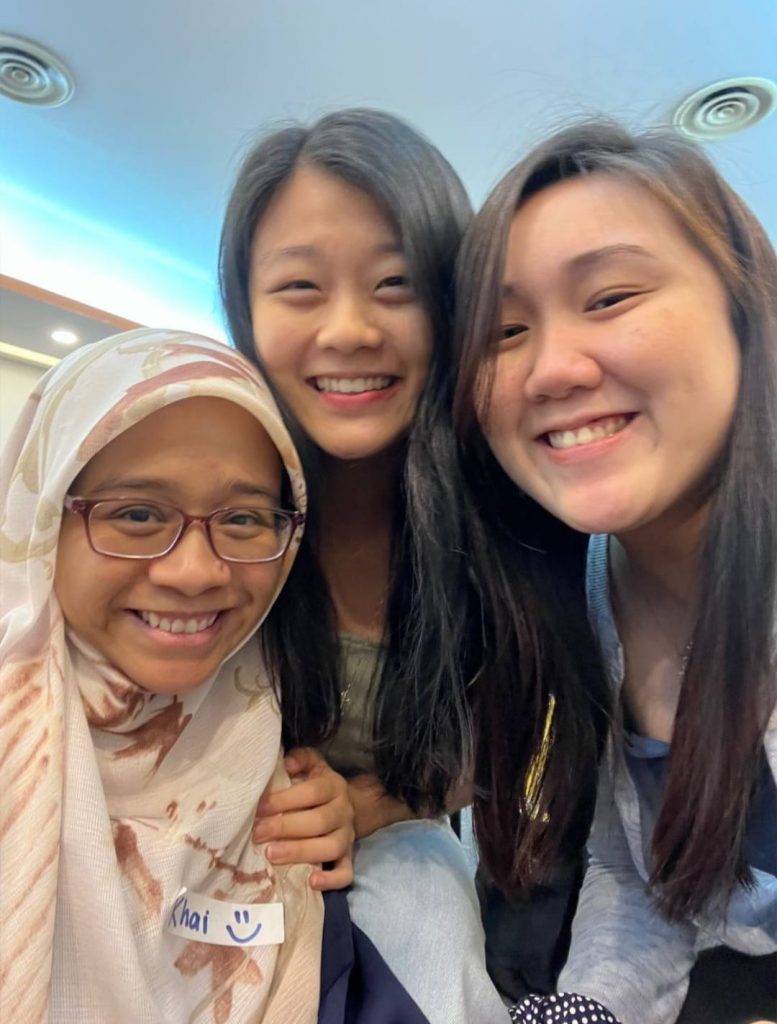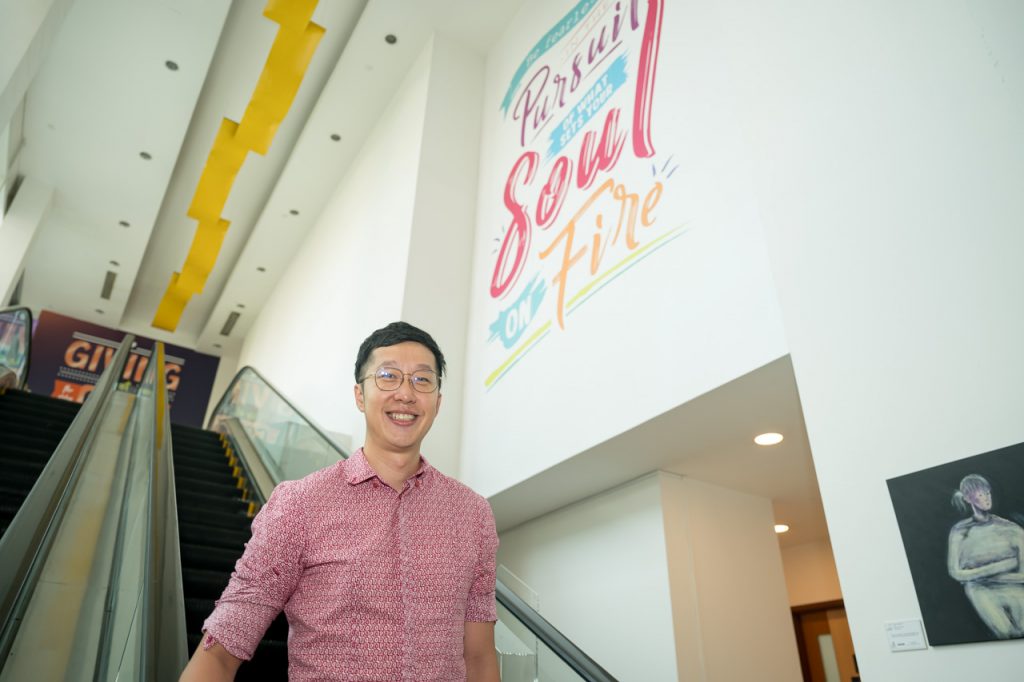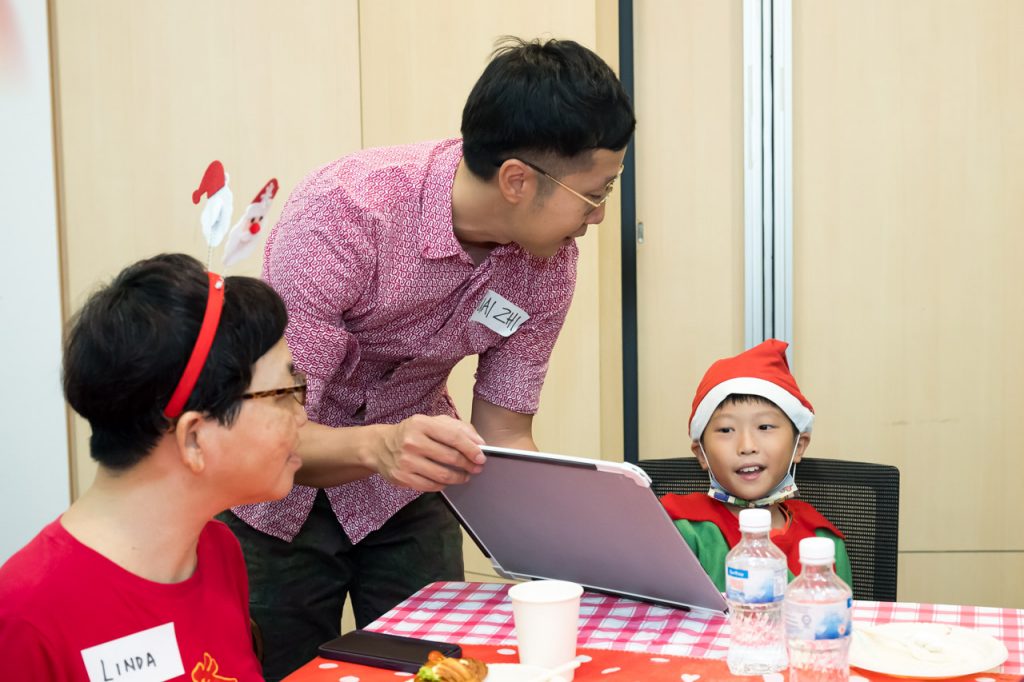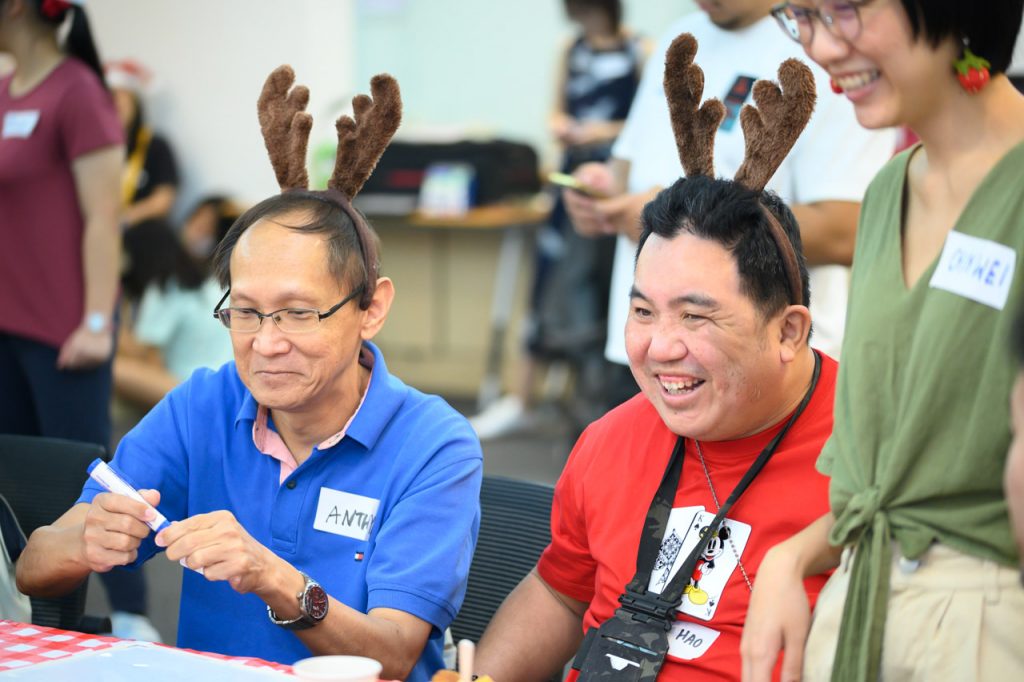All photos by Benjamin Tan for RICE Media unless otherwise stated.
Siti Khairiyah (Khai), a senior speech therapist at the National University Hospital (NUH), works with people who encounter challenges which cause them to lose their vital ability to communicate through speech.
One of them is a young lady whose conditions left her feeling isolated and alone at times. A tumour has grown in her brain, specifically in the area that governs her language capabilities. She can only follow one-to-one conversations—only if they move at a measured, slow pace, and if basic words are used.
If she ever finds herself in a larger social setting, she struggles to keep up with the flow of dialogue. As a result, she feels left out—the yearning for inclusion and connection with those around her has never been greater.
When it comes to other common tasks, like ordering food, the pressure is intensified.
The swift, mundane rhythm of placing an order now feels like an obstacle course in linguistics. On a normal work day, walking to the hawker centre from her office, she rehearses her request—“I’d like to have chicken rice with vegetables and one egg,” she repeats to herself.
She’s compelled not to make any mistakes. Otherwise, she wouldn’t know what to do next. If she were to catch the stall owner on a bad day, the blunt and frustrating interaction would only make her retreat in silence, without food in hand.
A Silent Struggle

These challenges are typical for patients suffering from aphasia. The term is used to describe the communication challenges faced by individuals whose afflictions in the brain make it difficult to express themselves.
Various acute events—ranging from car accidents, brain injuries from stroke, brain tumours, and dementia—can lead to the partial or complete loss of communication capabilities in individuals. As Khai shares, aphasia is “both invisible and profoundly impactful”, their impairment existing without any physical attributes seen by the people around them.
The young lady has a desire to appear “normal”, as the absence of effective communication is silently isolating her from her peers.
Khai is a decade into her practice, a result of a mid-career switch from the world of corporate marketing. She has seen countless patients who have lost their ability to communicate verbally.
She always felt it was her mission and responsibility to guide her patients to reconnect with the outside world again. She is not alone.
Cheryl Tan, a speech therapist at Sengkang General Hospital, shares the same thoughts too. She would sometimes venture beyond conventional communication methods that rely on words and gestures.
For example, she uses E-tran, a transparent and rectangular board available in different colours, that features a chart of letters, numbers and symbols.
“With this,” Cheryl explains, “my patient can use her eyes to communicate by directing their attention to specific letters, spelling out full words without the need for physical or verbal action.” The patient that Cheryl refers to is currently dealing with spinocerebellar ataxia and associated speech impairment.
This patient has faced a gradual loss of movement control and muscle coordination–basic functions like nodding or shaking her head have proven challenging. Other cognitive functions, fortunately, remain intact.
The patient is sharp and alert. Her eyes are always rolling about, indicating that she is fully aware of what is going on around her. Learning the patient’s frustrations, Cheryl began searching for solutions to enhance the patient’s interactions with the world around her.
Cheryl presents the E-tran to the patient and asks her to spell out her favourite flower. After some practice, Cheryl manages to grasp that the answer is ‘rose’. The patient acknowledges this by bursting into tears.
The board works.
“All this time, the patient has so many words and thoughts bottled inside her,” Cheryl recalls. She is relieved as she finally finds a way for the patient to express herself.

Challenging Duties
Both Khai and Cheryl admit that the role of a speech therapist is an ongoing journey marked by continuous growth and learning. They face patients who encompass a diverse spectrum of abilities and disabilities.
“There is no one-size-fits-all approach. It may sound like a cliché, but most of the time, we do function like investigators searching for the most effective methods and tailoring our assistance to the unique needs of each patient,” Cheryl shares.
Khai asserts the importance of understanding each patient’s goals and how working collaboratively helps them achieve what they want.
“It may appear simple, but this usually unfolds after a traumatic experience, be it an accident or a medical condition. So, we need to weigh the emotions of both the patient and their families. We need to help them to adjust to the changes first before embarking on improving their communicative functions.”
To add to the complexity, there is also a cohort of patients facing cognitive communication impairment. Goh Huai Zhi, Principal Speech Therapist at St Luke’s Hospital elaborates: “Successful information exchange also relies on higher-order brain functions.
“For instance, I need to temporarily remember what you said to respond appropriately, and I must pay attention to my own speech to avoid losing track of my thoughts.”

When these non-language-specific components are damaged, communication breaks down too. Some patients may lose their ability to comprehend what’s being said to them or what they are reading.
“If I say, ‘Could you please switch on the lights?’ Most of us would understand it as an instruction to be followed but patients with cognitive-communication impairment may not. Instead, they will reply, ‘Yes, I am able to turn on the light’.” Khai explains.
Though challenging, speech therapists often seek more than mere interactions that revolve around evaluating progress. They hope for a broader and lasting impact on their patients’ overall well-being.
“Many of my colleagues and I had always wondered, ‘What can patients do to improve when they are not seeing us?’” Huai Zhi reflects. “‘Is it possible to establish a safe space for them to meet, interact, and support one another?’”
These questions eventually gave rise to Aphasia SG, a non-profit organisation dedicated to supporting both individuals with aphasia and their caregivers.
Aphasia, Normalised
Primarily led by a core group of speech therapists and volunteers, Aphasia SG incorporates activities designed to boost the abilities of individuals with aphasia, be it through singing or chatting.
One activity involves facial exercises and singing, leveraging the power of music and songs to enhance patients’ verbal expression. The other provides a casual setting for patients to mingle with one another.
During chit-chat cafe sessions, patients and caregivers would be intentionally separated, allowing individuals with aphasia to independently navigate communication without relying on external assistance.
The team behind Aphasia SG aims to help patients hone their communication skills and boost confidence in an informal, stress-free, and supportive environment. This becomes crucial as not all individuals with aphasia in Singapore have access to speech therapy.

Khai, Cheryl, and Huai Zhi, as members of Aphasia SG, each discovered the voluntary group at different stages of their careers and have remained dedicated ever since.
Their primary role at Aphasia SG involves overseeing the chit-chat café sessions, where they interact with individuals with aphasia not merely as ‘patients’ but as valued members of the community or even as friends.
Khai reflects on her experience before joining Aphasia SG, realising she had never encountered someone with speech difficulties in a community setting.
She recognises the shift in her perspective, knowing that individuals with aphasia are not just patients in hospital uniforms but they are also somebody’s parents, children, and fundamentally, human beings.
“This made me reflect on the humanity side of speech therapy,” Khai says. “I shouldn’t require my patients to follow everything I say. I should see things from their point of view and help them get their messages out in a way they are most comfortable with.”
Huai Zhi agrees. He highlighted that Aphasia SG has offered a direct take on how patients, not limited to his own, navigate life with aphasia in their natural home environment.
This first-hand experience allows him to witness the growth and improvement of individuals over time. Simultaneously, he also views his work as a form of advocacy, expressing the desire to normalise awareness of aphasia, like how dementia is commonly understood.
“The goal is to eliminate the need for constant explanations and create a society where understanding aphasia is as widespread as awareness of other conditions,” Huai Zhi adds.

Driven by this sentiment, Khai, Cheryl, and Huai Zhi find profound meaning in contributing to this awareness-building process, envisioning a future where individuals with aphasia receive adequate support and empathy.
“This is what motivates and keeps us going,” Cheryl says with a smile. Indeed, though activities organised by Aphasia SG help individuals with aphasia regain their confidence, it wouldn’t be sufficient without the continuous support and the positive impact that speech therapists have made.
Quarter-Life Calling
Surprisingly, despite their unwavering passion, Khai, Cheryl, and Huai Zhi did not initially set out to become speech therapists. In Khai’s case, her journey took an unexpected turn during what she describes as a “quarter-life crisis”.
Originally trained in mass communications, Khai spent several years working in recruitment and marketing but eventually arrived at a crossroads—she questioned herself if the corporate world was her long-term path.
It was during this period of reflection that she stumbled upon a poster advertising a postgraduate speech therapy course at the National University of Singapore. Inspired to explore a new direction and serve those who are in need, Khai made the bold decision to leave her job and return to school.
A decade later, Khai believes choosing speech therapy remains one of the most rewarding decisions she has ever made.
“If you have a genuine interest in connecting with people, understanding them, and making a positive impact, speech therapy may be your calling,” Khai states.

Cheryl echoes the sentiment. “I have patients whom I have built a long-lasting rapport with since day one when they first walked into my outpatient office. Over time, as we became close, we also talked about non-therapy-related stuff. They would delve into what goes on in their lives, like a recent holiday or sharing the joy of celebrating festivals.”
Looking ahead, Huai Zhi sees a landscape of continuous development within the field of speech therapy. “The domain is still evolving, so there are definitely a lot of exciting changes coming up,” he shares.
What will stay the same is the human element—the intangible connection between healthcare worker and patient, making every journey to regain a lost ability a joyful one.







